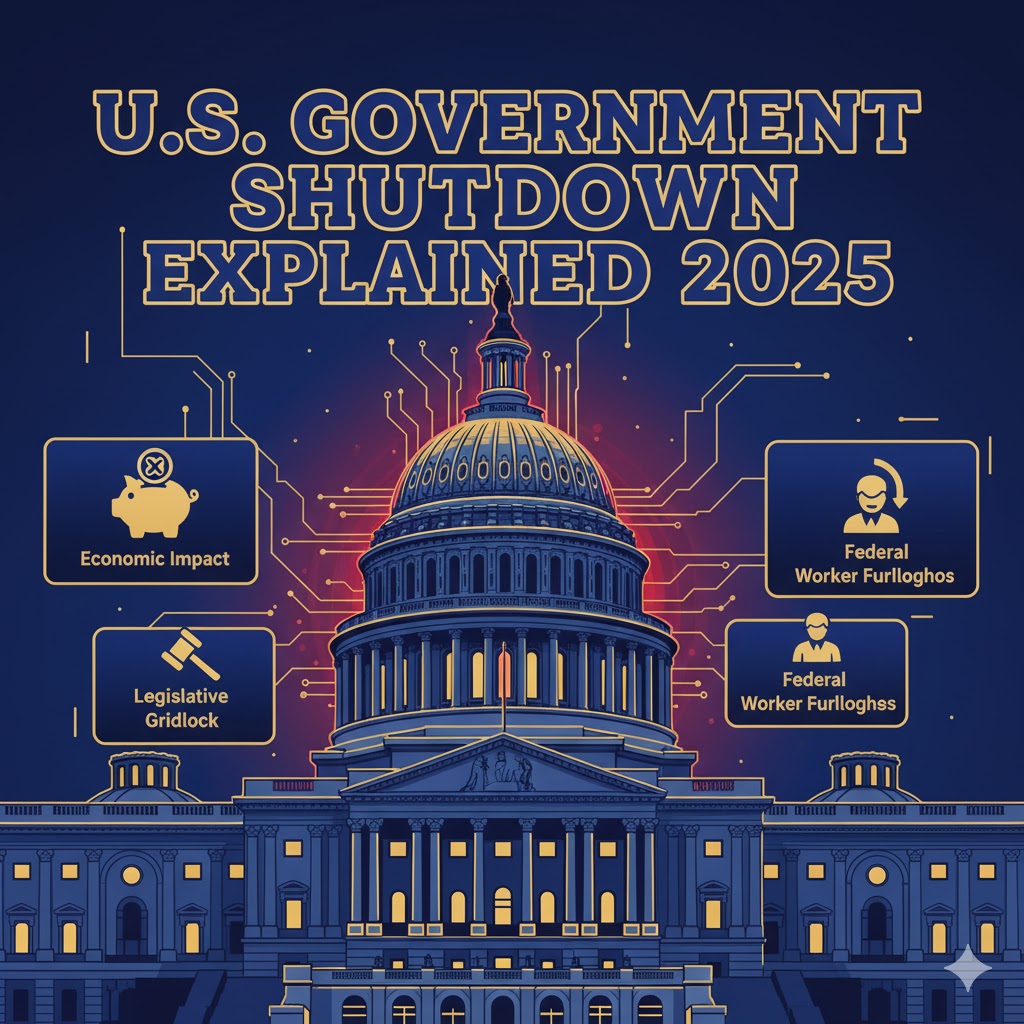Introduction: Why the US Government Shutdown Matters in 2025–2030
Few political events affect as many lives as a US government shutdown. Whether you’re a student, business owner, or federal worker, the moment Congress fails to approve a spending bill, the ripple effects begin — from unpaid salaries to suspended services.
As the 2025 budget crisis unfolded, millions of Americans once again asked the same question: Why does this keep happening? This guide breaks down what a shutdown means, its real economic consequences, the political patterns behind it, and how citizens can stay prepared for the future.
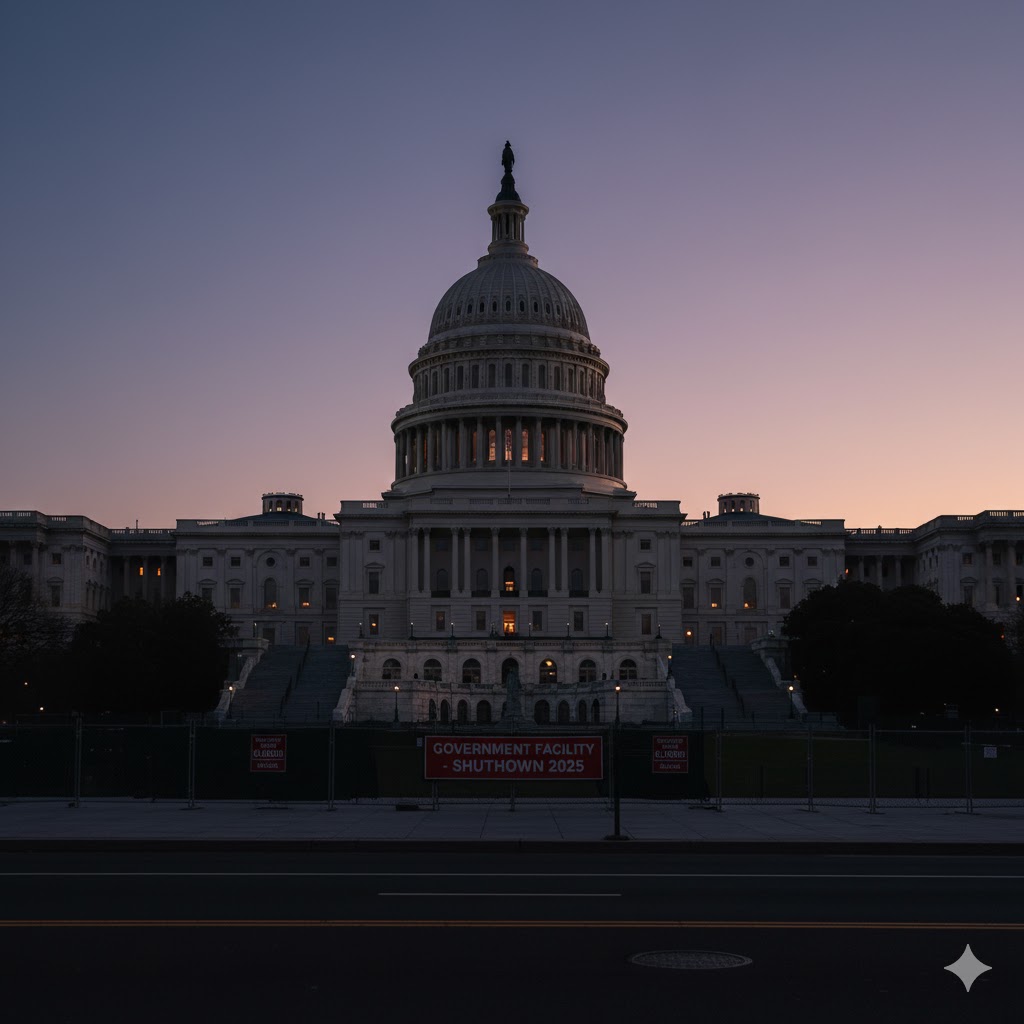
1. What Is a US Government Shutdown?
A government shutdown occurs when Congress fails to pass necessary funding legislation, causing certain federal agencies to suspend nonessential operations. Employees are either furloughed or work without pay until a new budget is approved.
Shutdowns can affect multiple sectors — from passport services and national parks to NASA missions and student loan processing. Though essential services like air traffic control, military, and Social Security continue, millions still experience severe disruptions.
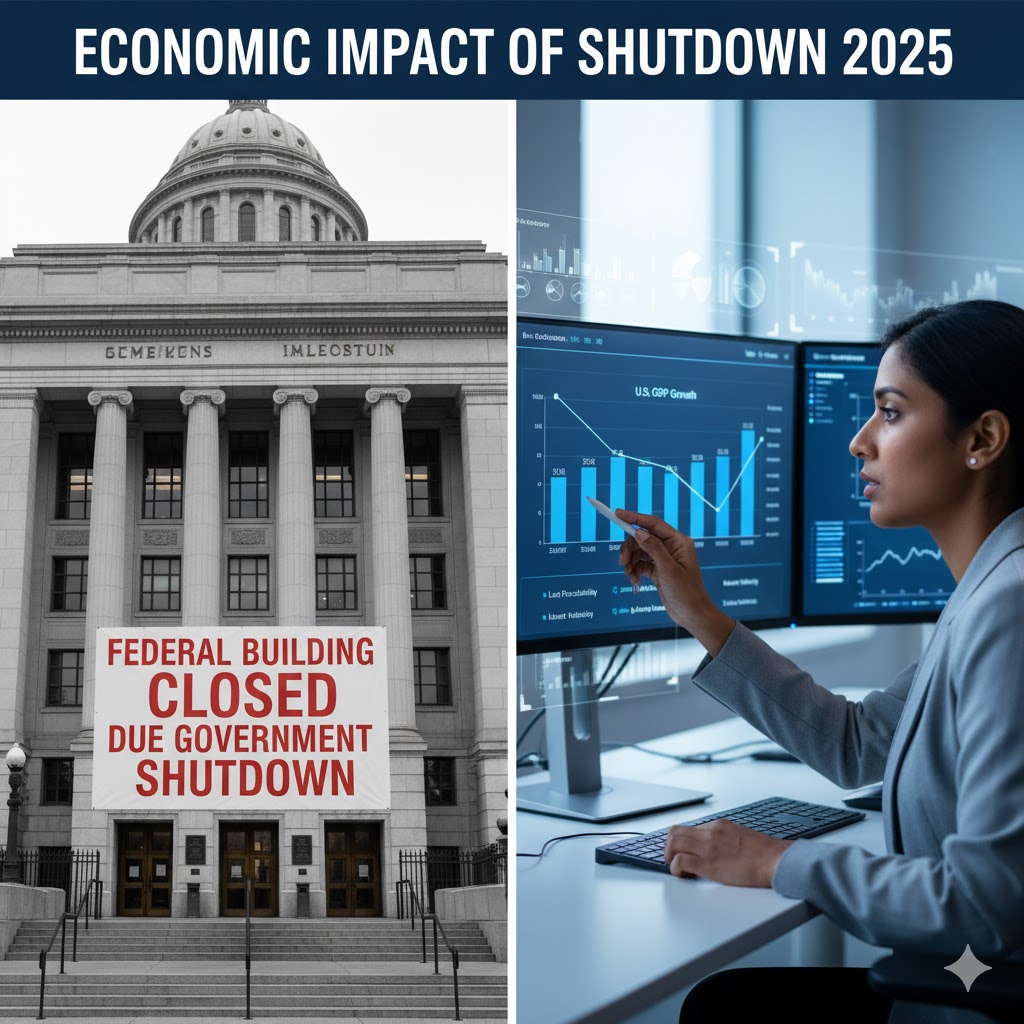
2. Economic Impact of the US Government Shutdown
Shutdowns are far from symbolic political fights — they have tangible economic consequences. The Congressional Budget Office (CBO) estimates that each full week of shutdown can reduce quarterly GDP growth by up to 0.1–0.2%.
In the 2025 shutdown, small businesses near federal buildings lost significant income, while tourism-dependent states like California, New York, and Florida reported billions in delayed revenues.
According to the U.S. Chamber of Commerce, repeated shutdowns undermine investor confidence and create “an atmosphere of uncertainty incompatible with stable growth.”
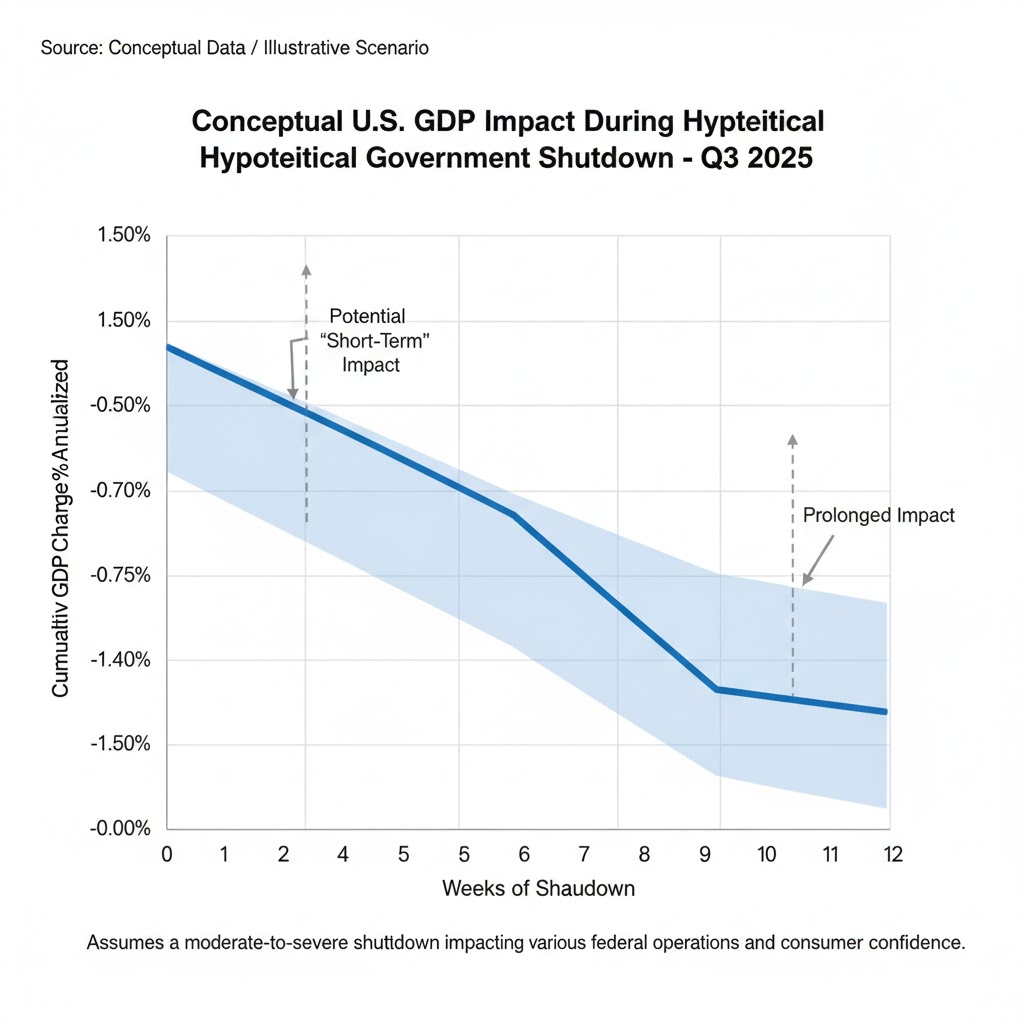
Must Read also: U.S. Economy Trends 2025 – What’s Driving Growth & Risk
Source: Visit Congressional Budget Office Reports for updated fiscal data.
3. Political Lessons: Why Shutdowns Keep Happening
Shutdowns often emerge from partisan gridlock between the House, Senate, and the White House. The U.S. Constitution divides power over spending, but when political polarization intensifies, compromise becomes elusive.
Historically, both major parties have used shutdowns as negotiation leverage — from border wall funding debates to healthcare and defense budgets.
Yet these standoffs erode public trust and threaten America’s international credibility.
Reform proposals include automatic continuing resolutions, ensuring that basic funding continues even without a final budget, preventing future shutdowns entirely.
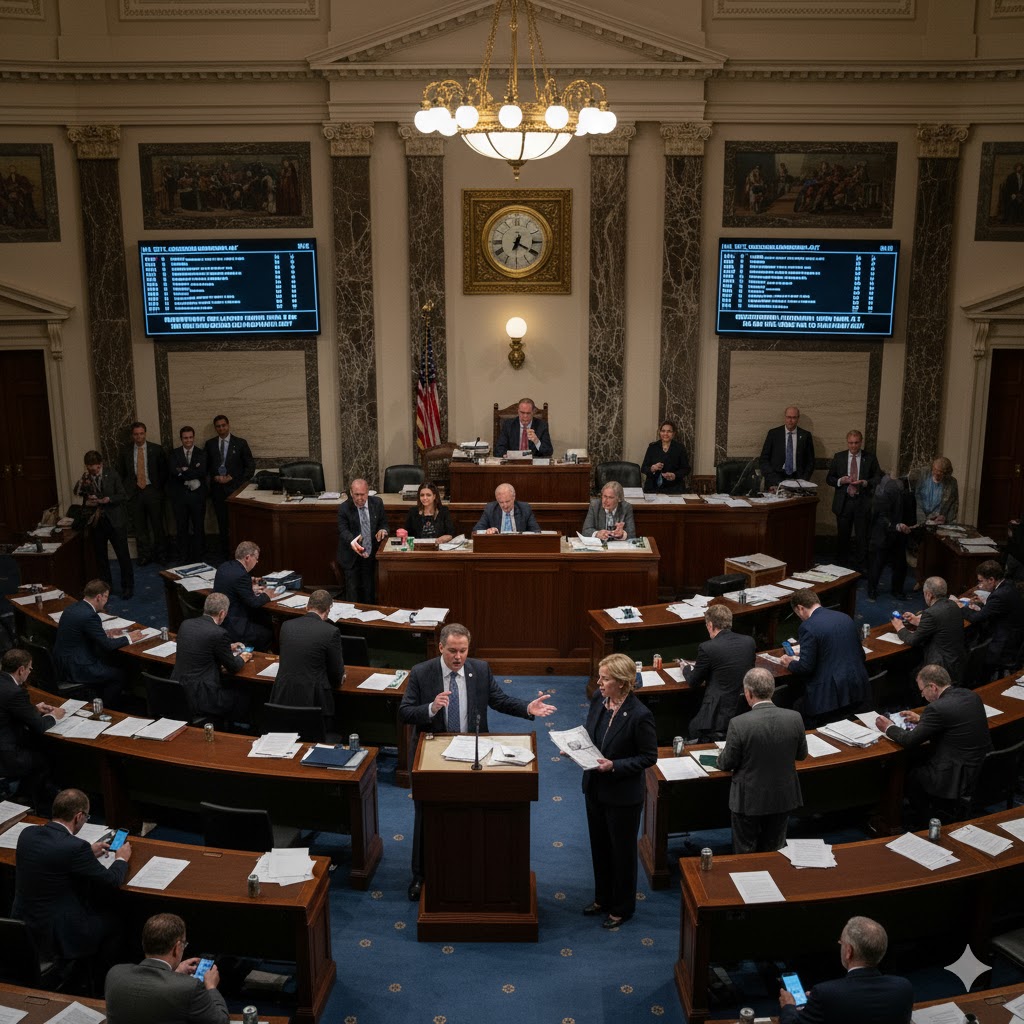
4. How the 2025 Shutdown Affected Real People
The 2025 shutdown, one of the longest in recent memory, left over 850,000 federal workers furloughed. Many struggled to pay rent, mortgages, and tuition bills.
Airports faced staff shortages, IRS refunds were delayed, and federal aid programs temporarily halted.
“I worked 14 days without pay before my agency finally closed,” says Maria Thomas, a U.S. Forest Service employee. “It wasn’t just financial — it was emotionally draining.”

5. Global Repercussions of the US Government Shutdown
Because the U.S. economy anchors global markets, shutdowns ripple internationally. Foreign investors interpret prolonged shutdowns as signs of political instability.
During the 2025 event, the U.S. dollar weakened slightly against the euro, and major credit agencies warned of potential rating downgrades.
Developing countries dependent on U.S. aid or trade faced delays in development funding, amplifying global uncertainty.

6. Key Lessons for Policymakers
From an analytical lens, shutdowns highlight one major governance gap — budgetary rigidity. The absence of automatic stabilizers in the U.S. legislative process makes the government vulnerable to political brinkmanship.
Economists recommend establishing multi-year budget frameworks, allowing flexibility during emergencies and avoiding annual crises.
Implementing bipartisan budget rules could prevent shutdowns without compromising democratic debate.

7. Citizen Preparedness: How to Protect Yourself During a Shutdown
Shutdowns may seem distant political battles, but their consequences reach everyone.
Here’s how citizens can stay prepared:
- Track updates via official sources like USA.gov
- Keep three months of emergency savings if your job depends on federal contracts
- Download digital copies of vital documents before services go offline
- Use local community resources for food, healthcare, or financial aid

8. Financial Planning for Federal Workers
If you’re a federal employee or contractor, a shutdown can mean delayed or suspended pay. Experts recommend:
- Using low-interest credit or union-based loans
- Communicating proactively with landlords or lenders
- Accessing employee assistance programs (EAPs) for temporary relief
Online communities like Federal Employee Support Forums have become lifelines for moral and financial support.

9. Long-Term Economic Forecast (2025–2030)
If political gridlock continues, analysts warn the U.S. could face structural budget fatigue — where repeated shutdowns weaken both domestic and global trust.
However, digitalization of federal services and AI-based budgeting tools may improve resilience.
Between 2025–2030, experts project that proactive financial reforms could reduce shutdown frequency by 60%, stabilizing the economy and restoring confidence.
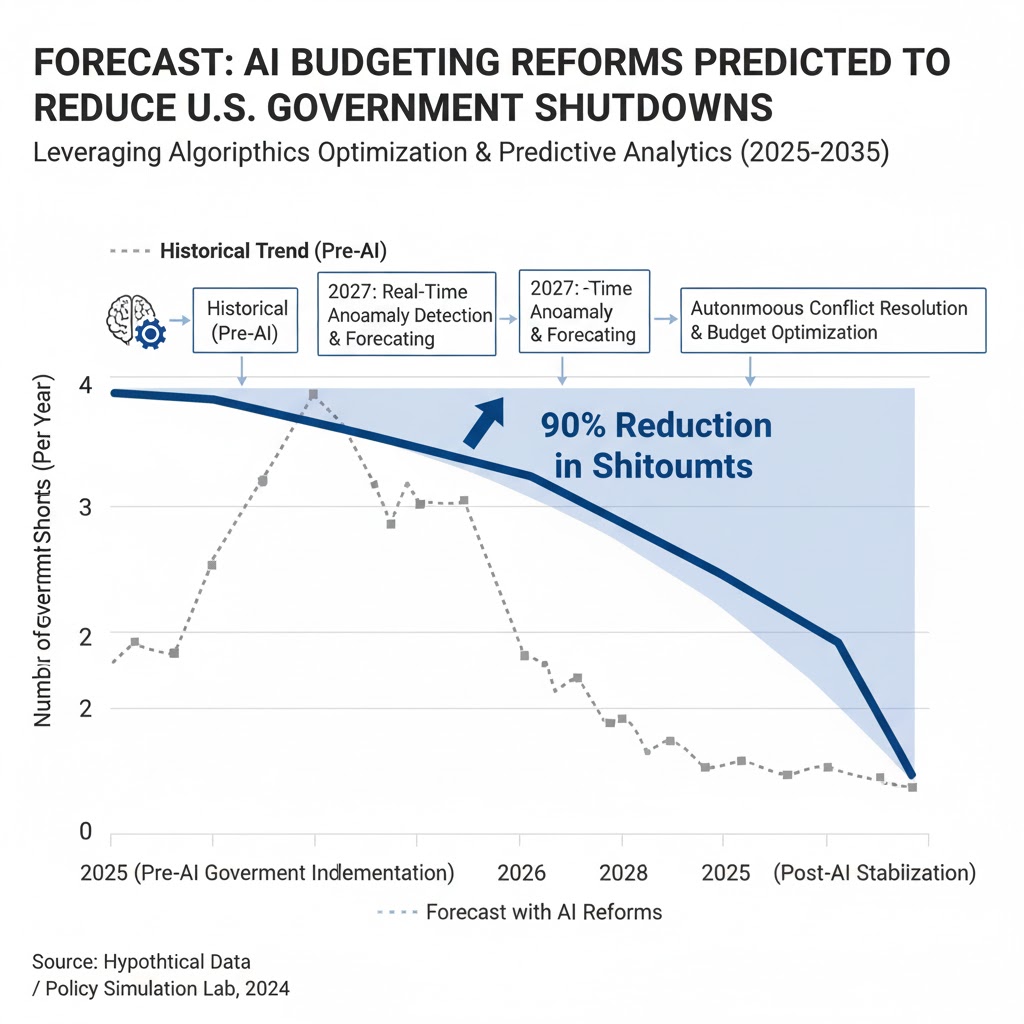
10. Advantages of US Government Shutdown Awareness
- Promotes civic education and understanding of democracy
- Increases transparency in public budgeting
- Encourages voters to hold representatives accountable
- Motivates public debate on fiscal reform and priorities

11. Disadvantages & Risks of Frequent Shutdowns
- Economic losses in billions each year
- Long-term reputational damage internationally
- Reduced morale among federal workers
- Delays in citizen services and social aid programs
- Inconsistent business environment for startups and exporters
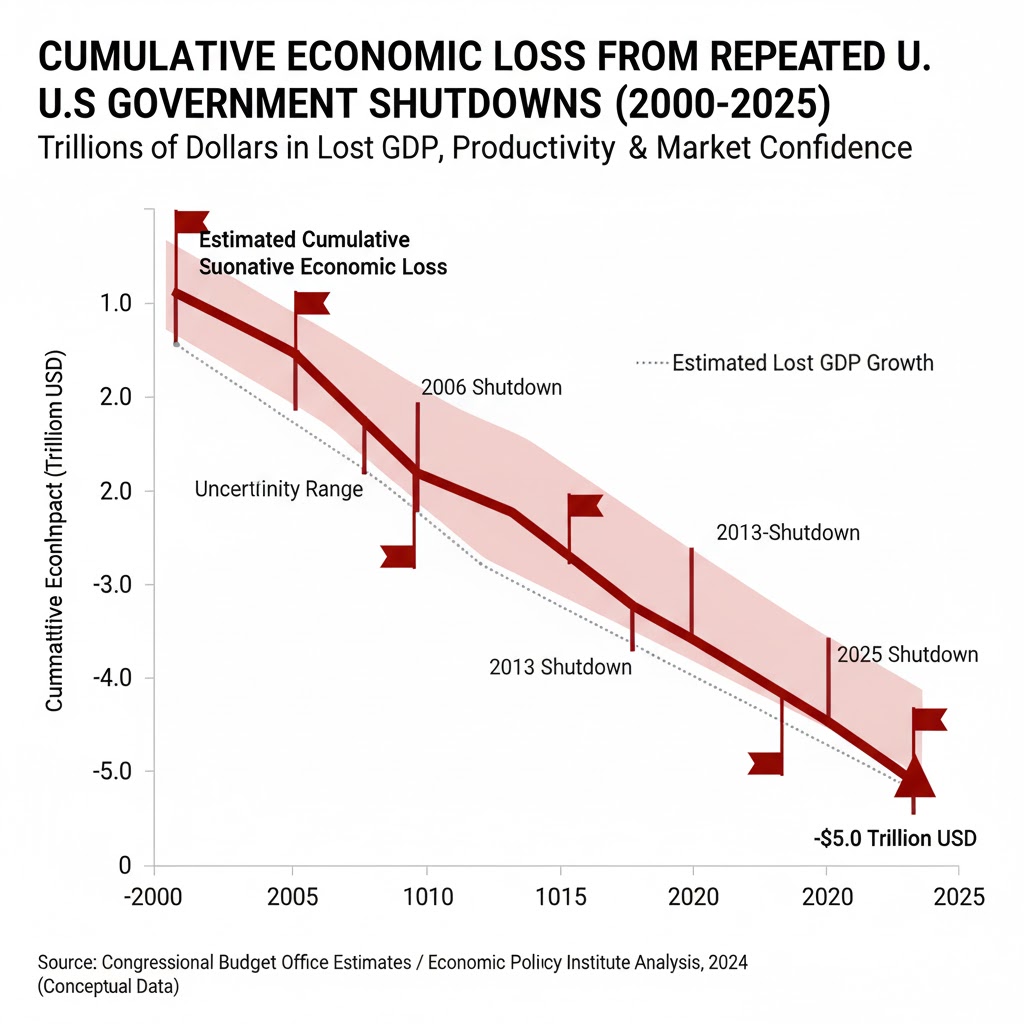
12. Local Expert Insight (E-E-A-T Element)
“Shutdowns are not just about politics — they are about planning,” says Dr. Nadia Rizvi, a Pakistani-American policy analyst.
“Every country, including Pakistan, can learn from the U.S. model to create more resilient budgeting systems that don’t paralyze governance.”
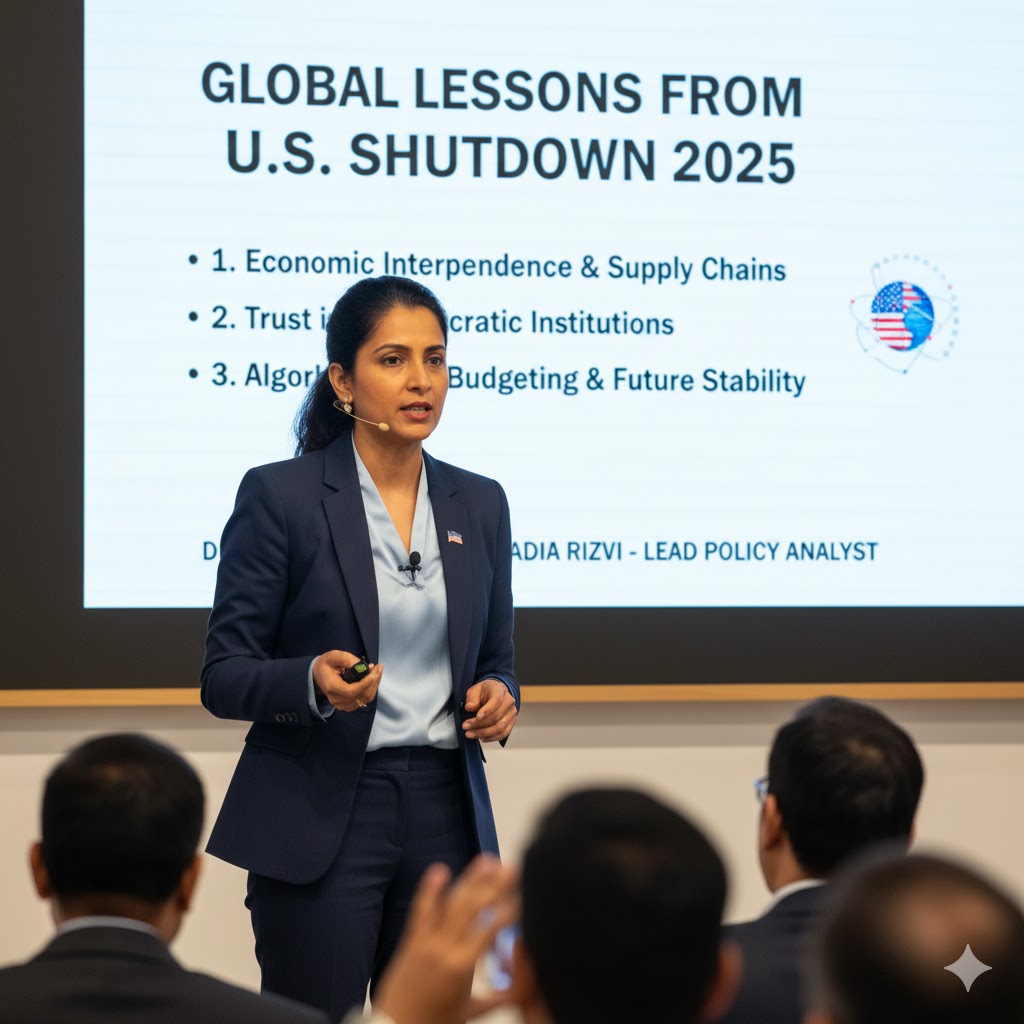
13. FAQs – U.S. Government Shutdown 2025–2030
Q1. How long can a US government shutdown last?
A: It can last from a few days to several weeks, depending on how quickly Congress passes funding bills.
Q2. Does a government shutdown affect military pay?
A: Essential military operations continue, but pay can be delayed until the shutdown ends.
Q3. Are Social Security and Medicare affected?
A: No, they remain operational since they are funded separately from annual appropriations.
Q4. Can shutdowns be permanently prevented?
A: Yes — through reforms like automatic continuing resolutions that maintain funding during political disputes.
Reporter: Turning Shutdowns Into Lessons for the Future
The US government shutdown is a recurring reminder that democracy, while powerful, requires balance and cooperation.
Understanding its economic, political, and personal dimensions empowers citizens to demand better leadership and long-term solutions.
If governments can transform shutdowns into opportunities for reform, the next generation may finally witness a more stable, transparent, and accountable democracy.
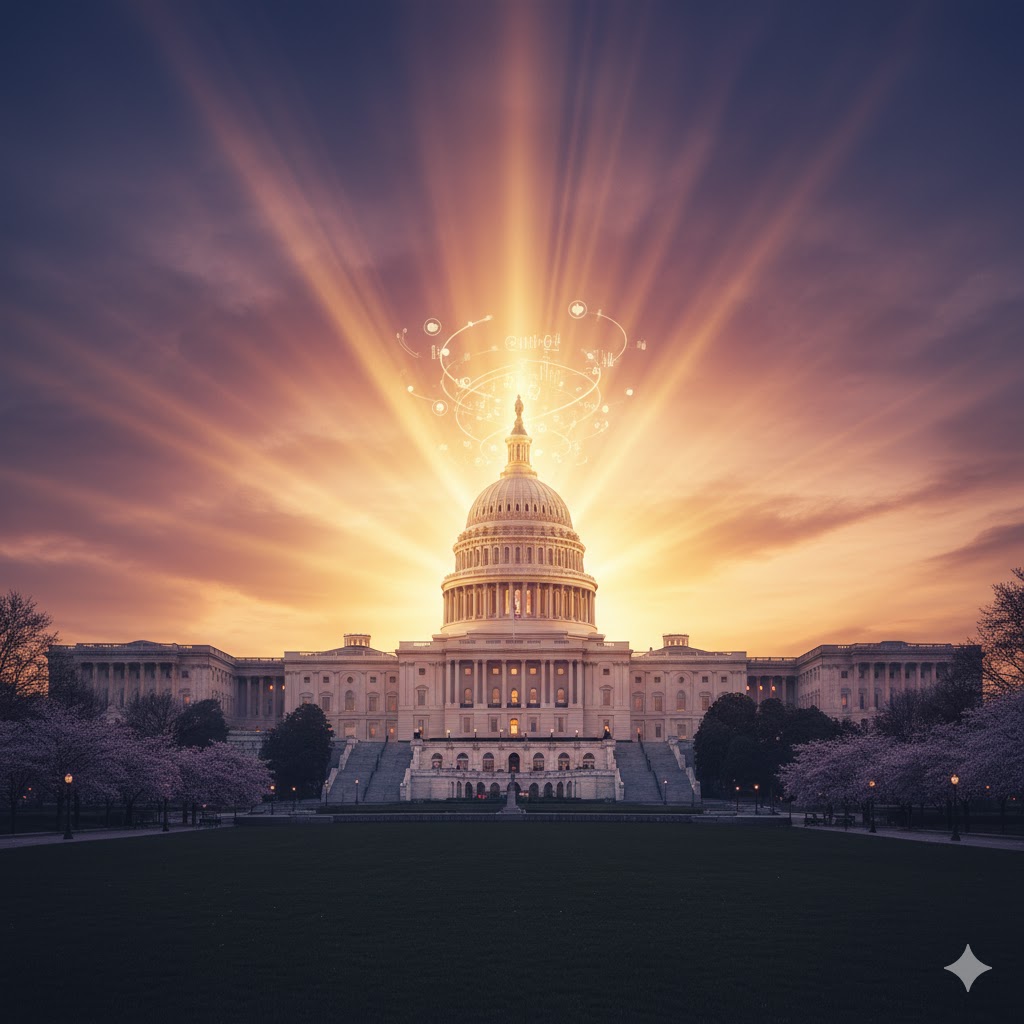
Must See:
- Hidden Gems Travel Destinations 2025–2026: Europe & Asia
- Moon Wedding Travel: Ultimate Cosmic Moonlight Marriages Dream 2035

